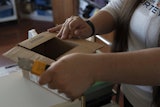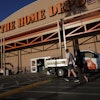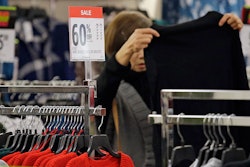With ever-growing customer expectations of fast, accurate service, consumers increasingly want to know where products they have ordered online are, as well as what items are available at a particular store, at any given point in time. With the demand for this level of transparency, manufacturers and retailers need to gain more control and visibility in their supply chains to save costs, improve efficiency and keep their customers happy.
Advances in cloud and tracking technology, such as RAIN RFID, allow previously disconnected technology to connect to the internet, expanding the definition of the Internet of Things (IoT) and enabling manufacturers and retailers to benefit from the increased visibility gained by digitizing their supply chains.
But, how can companies leverage today’s technology in order to increase visibility and control over their supply chain? Where does digitizing and tracking products start? And, what benefits will companies see from digitizing their supply chain?
In the Plant
In order to take full advantage of the IoT, companies must give items a digital life and identity. This means adding barcodes, active transponders or RAIN RFID tagging to products. This can be a challenge for manufacturers whose suppliers are across many different countries with varying technological infrastructures, and many wait until they have received the products from their suppliers to tag the items and start their digital life. However, manufacturers can leverage passive and active RFID-based sensors within the plant to easily and efficiently begin tracking their goods.
For example, instead of tagging hundreds of individual bolts, an automobile engine manufacturer would affix a passive RAIN tag that relies on readers to pick up their signal to the bin that holds these bolts. This allows the manufacturer to track the bin’s movement through various touch points.
On the other hand, active RFID tags that draw from their own power supply to transmit signals provide real-time location data and are best suited for tracking larger, high-value assets. A good use case for active RFID is to tag engines as they are assembled and move throughout a plant. From a software interface, manufacturers can see where each engine is located and how many they have within the facility at any time.
In the Warehouse
According to the Zebra Technologies Warehouse Vision Study, warehouse executives plan to expand their IoT technology investment by 52 percent over the next few years. Together with automation and warehouse execution systems (WES), IoT technologies provide real-time visibility into warehouse inventory and goods movement throughout the facility.
Building on the use cases of RFID tags using RAIN RFID, Bluetooth low energy (BLE) tags are currently in development. Depending on the Bluetooth tag and reading device, these tags can be read from 100 to 300 feet away. BLE is an area that is going to add to supply chain visibility in the IoT world, and it enhances some of the RAIN RFID technology. While RAIN RFID tags are typically placed on individual items, uses for low-energy Bluetooth tags would include tagging a pallet or a high-ticket item like a piece of industrial machinery.
Implementing IoT technology within the warehouse not only improves security, but also the management, storage, movement and condition of the goods within the facility – improving labor efficiency, increasing order accuracies and reducing inventory shrinkage.
In Transit
The National Cargo Security Council’s estimates that the global financial impact of cargo loss exceeds $50 billion annually. This loss of cargo is often due to theft, damage or delay.
In the past, there was no way to track RFID-tagged goods from the time they leave the warehouse to their arrival at the distribution center or store. The evolution of IoT has led to technology solutions that combine sensors with GPRS, GPS, Wi-Fi and BLE functionality, making it possible to track goods in transit by using cellular connections. In addition to tracking the location of goods, some solutions allow manufacturers to monitor environmental conditions during transit, such as temperature, humidity, shock or light exposure, ensuring the quality of sensitive items when they arrive at their destination.
Importing this information into a supply chain management (SCM) system also allows companies to automate the actual tracking function, allowing staff to manage shipment monitoring by exception. This increased visibility helps manufacturers decrease cargo loss while reducing labor costs.
In the Store
When companies tag their goods they gain inventory visibility that has broad, expansive implications across the whole supply chain – including the retail store. With the data gathered from RFID tags and smart shelving, manufacturers gain insight into which products sell faster so they know where to funnel their production resources. By the same token, instead of filling store shelves and ending up with excess inventory that needs to be moved at a discount, retailers have better visibility into their inventory and can replenish items based on actual sales.
From the manufacturing plant to the retailer, companies are leveraging the Internet of Things to gain better visibility and greater management over their goods throughout the supply chain. With the variety of technology and its applications at their disposal, businesses looking to digitize should take a look at what they what to track and how they want to access that data. These requirements will determine the best device, whether it is barcodes, RAIN RFID, or another type of sensor, to meet their tracking needs.
Tom O'Boyle is director of RFID and barcoding at Barcoding Inc..






















